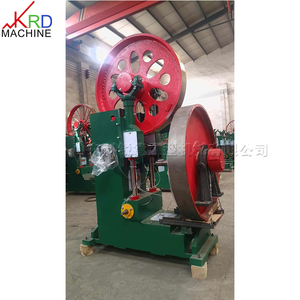(173 products available)






























































































































































































Market Overview: The global market for band saw blades has demonstrated substantial growth, estimated at US$1.6 billion in 2023 and projected to reach US$2.2 billion by 2030, reflecting a compound annual growth rate (CAGR) of 5% from 2023 to 2030, according to Research and Markets. Notably, segments like High-Speed Steel band saw blades are expected to grow even more robustly, forecasted to reach US$1.2 billion by 2030 with a CAGR of 5.3%. The U.S. market, valued at approximately $412.9 million in 2023, is poised to expand further, while China is anticipated to grow at an impressive 7.4% CAGR, reaching $472.9 million by 2030, emphasizing the regional dynamics that drive this market.
Industry Insights: Consumer behavior is shifting towards high-performance tools, with increasing demand for durable and efficient band saw blades. This demand is fueled by advancements in manufacturing technologies and growing applications across various industries, including metalworking and woodworking. The competitive landscape comprises several key players, including AMADA and WIKUS, who are focusing on innovation and product development to capture market share. Additionally, sustainability trends are influencing purchasing decisions, as consumers and businesses seek eco-friendly manufacturing practices. As suppliers adapt to these evolving preferences, the band saw blades market is well-positioned for continued growth, driven by both technological advancements and changing consumer expectations.
Band saws are saws that cut using a long continuous band of steel with teeth located on the inner side of the band. These machines cut in a straight line, giving them the ability to make irregular cuts with a high level of accuracy.
There is a variety of strong, versatile, and precise cutting machines in the tool market. They all cut different types of wood, metal, and other materials in various shapes and sizes for industrial use. There are also stationary and portable designs to consider when looking for a band saw cuter, with the former being more common in woodworking shops and factories.
People often look to buy MJ band saws because they are manufactured by an established brand. Machines from this band include the following:
Vertical Band Saws :
JM
Are commonly used in machine shops and manufacturing facilities. They have larger blades that are better suited for cutting through metal and more substantial materials. MJ has a heavy-duty vertical bandsaw machine with a cutting capacity of 1,820mm. Its main features include an illuminated cutting area, automatic brake and tension control of the band saw, a digital display for band saw length and a high-power motor.
Vertical Band Saws:
Are usually used for woodworking tasks, such as cutting irregular shapes or making curved cuts in wood. They are also used for cutting other soft materials like plastic and foam. An example of a vertical bandsaw for wood by MJ is the MJ 711 V. This machine has a cutting height of 300 mm, a cutting width of 400 mm, and its main parts and details are made of robust and high-quality cast iron.
Portable Band Saws:
Are used to make precise cuts in metal pipes, brackets, and sheets. They are also used for cutting commonly found materials in construction, automotive, and plumbing industries. This saw usually features electronic speed control, an easy-to-read LED display, a protective guard andRoller guides with sealed bearings in front and back of the blade.
When choosing a band saw machine for sale, it is crucial to focus on the specifications and features of the item. Understand how each saw works in the industry before buying them for resale. Consider the types of materials the saw can deal with. Different machine types are meant for various kinds of materials. Something like a wood band saw may not cut metal or plastic. Learn the thickness and size limitations of the machine so as to align it with the targeted customer base.
Worktable size and adjustments are important factors to explore. Customers will want to know the size of wood or logs the saw can handle. Also, will want to know whether the table can be tilted for angled cuts. Explore the available cutting speed and capacity settings. Different projects need to be done at various speeds and capacities. Look for machines with multiple settings so your customers can have options. Look at the safety features included in the saw machine. Blade guards and emergency stop buttons are crucial for any machine with moving parts.
When working with a band saw machine supplier, learn the delivery options and supply chain processes. Deliveries should be timely, especially when there is consistent customer demand. Negotiate favorable payment options to avoid putting the business in financial risk. Explore product warranty options and after-sale support. Is there a technical support line when customers need assistance with the saw machine? These are some of the questions to ask the supplier to ensure end-user satisfaction.
Q1: Which types of materials can a band saw cut?
A1: The MJ band saw is mainly designed for cutting metals such as stainless steel, carbon steel, hi carbon steel, alloy steel, etc. Nevertheless, there are also band saws for cutting other materials, e.g., wood, plastic, ceramic, glass, rubber, and foam.
Q2: What are the differences between a band saw and a blade saw?
A2: The band saw has a continuous loop blade, whereas the blade saw comprises multiple rotating discs or blades. This fundamental distinction affects the cutting capabilities, features, and applications of both saws. For instance, a band saw is suitable for cutting irregular shapes and making precise straight cuts. On the other hand, a blade saw may be more appropriate for general cut operations and dealing with various materials and thicknesses.
Q3: How does a band saw's blade tracking work?
A3: The blade tracking mechanism helps to keep the blade aligned as it moves around the wheels. It uses adjustable guides and grooves to guide the blade path, ensuring it stays centered on the wheels. Appropriate tracking is critical for cutting accuracy, tool stability, and minimizing blade wear.